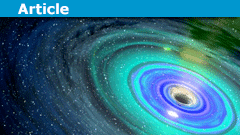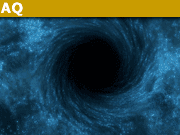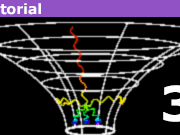Exploring the Math in Killing Fields and Black Holes
Table of Contents
Killing Vector Field
The Killing vector field is a vector field on a differentiable manifold that preserves the metric over spacetime (from this I assume, in very basic terms, the Killing vector field ensures smoothness of the metric). Although time-like (c^2 dt^2 > dr^2) at infinity, it does not need to be time-like everywhere outside the bh horizon. For Kerr metric (which can also be applied to Schwarzschild metric), the equation (which ranges from 0 to -1 at infinity in time-like space) is-
[tex]\tag{1} \kappa^2=g_{tt}=-\frac{\Delta-a^2sin^2\theta}{\rho^2}[/tex]
where
[tex]\Delta= r^{2}+a^{2}-2Mr[/tex]
[tex]\rho^2=r^2+a^2 cos^2\theta[/tex]
and M=Gm/c^2 (gravitational radius) and a=J/mc (angular momentum per unit mass)
which equals-
[tex]\kappa^2=-\left(1-\frac{2Mr}{r^{2}+a^{2}cos^{2}\theta}\right)[/tex]
Based on the equation above, the divergence of the Killing field is at the event horizon for a static Schwarzschild bh and at the ergosphere for a rotating Kerr bh, which coincides with co-ordinate intervals become light-like (c^2 dt^2 = dr^2) at the point of divergence and then space-like beyond (c^2 dt^2 < dr^2).
Killing Surface Gravity
For a static Schwarzschild black hole-
[tex]\tag{2}\kappa=\frac{c^4}{4GM}[/tex]
For a rotating Kerr black hole-
[tex]\tag{3}\kappa_{\pm}=\frac{r_{\pm}-r_{\mp}}{2\left(r_{\pm}^2+a^2\right)}[/tex]
where
[tex]\tag{4} r_+=M+\sqrt{M^2-a^2}[/tex]
[tex]\tag{5} r_-=M-\sqrt{M^2-a^2}[/tex]
and M is the gravitational constant (M=Gm/c^2) and a is the spin parameter in metres (a=J/mc).
While calculating κ is straight forward for a static black hole, the figures for a rotating black hole seem to be missing something. The results I get for a rotating 3 sol mass black hole with a spin parameter of 0.95 are-
κ_+=2.6855e-5
κ_-=-5.1241e-5
While the equation for rotating black holes appears to incorporate G and c, it’s evident that something else needs to be added but what?
Killing Horizon
[tex]\tag{6}\Omega_H=\frac{a}{\left(r_{\pm}^2+a^2\right)}=\frac{1}{2} \frac{a}{M} \frac{1}{r_{\pm}}[/tex]
results-
Ω_+=8.1699e-5
Ω_-=1.5589e-4
what are the quantities/units of these figures and what do they represent?
Any feedback would be appreciated.
Steve
(1)- page 256, (3)(4)(5)(6)- page 253
‘Compact Objects in Astrophysics’ by Max Camenzind
(2)-
http://en.wikipedia.org/wiki/Surface_gravity
_________________________________
UPDATE-
Regarding the Killing horizon, if Ω_+ or Ω_- are multiplied by c then they provide figures equivalent to the frame-dragging rates in rads/sec (as measured from infinity) at that specific radius/horizon (presumably only in the equatorial plane). Oddly enough, when calculating the reduced circumference (R) for both r_+ and r_- using an equation derived from Kerr metric the results are equal to the Schwarzschild radius in both cases.
________________________________
UPDATE-
According to another source, it appears the figures for the Killing surface gravity are multiplied by c^2 which puts the figures in the right ballpark, though the alternative source only calculates the Killing surface gravity for the outer event horizon and not the inner (which would be interesting to confirm as the quantity of gravity according to equation (3) is negative)-
[tex]\tag{7}g_H=c^2\ \frac{r_+-M}{2Mr_+}[/tex]
For the inner event horizon, it’s likely just a case of replacing r_+ with r_- which produces results (before c^2) identical to equation (3).
(7)- page 211
”General Relativity, The Kerr Black Hole’ by Max Camenzind & A. Muller
Early life spent working and studying in York UK, 3 year architecture degree at Oxford polytechnic, 2 year architecture diploma at Oxford polytechnic, part-time in US. Worked in both York and London within architectural profession.









Leave a Reply
Want to join the discussion?Feel free to contribute!